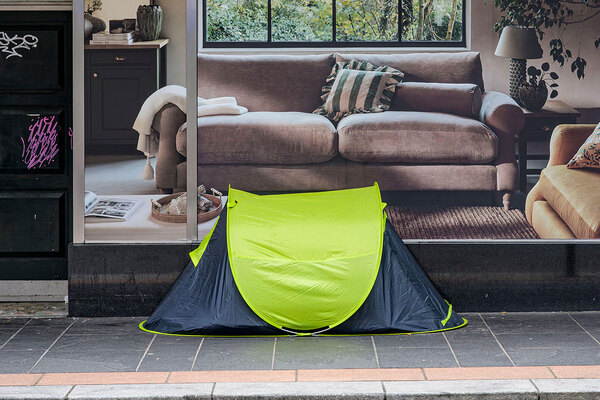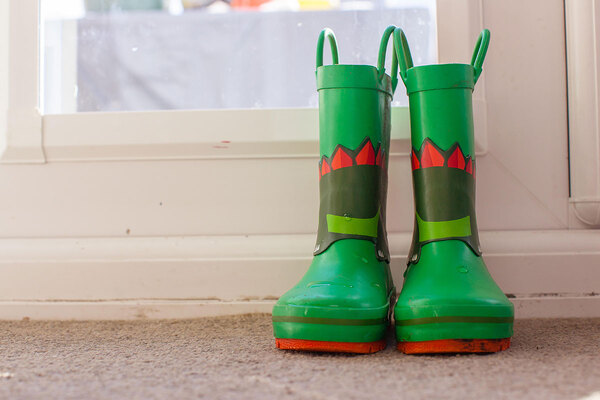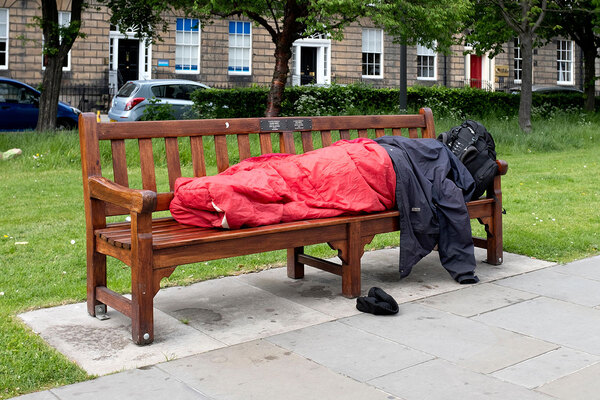You are viewing 1 of your 1 free articles
 Jules Birch
Jules BirchGrowth in ‘Airbnb-style’ lettings and temporary accommodation is a clear sign of housing pressure
Jules Birch looks at the Chartered Institute of Housing’s latest UK Housing Review, which is out today
What do you think have been the two fastest-growing forms of housing over the past decade?
The trends since the financial crisis of falling homeownership, declining social renting and surging private renting have only recently shown signs of going into reverse, and we’ve also seen the blurring of social and ‘affordable’ housing.
But you would struggle to fit two of the biggest changes highlighted in the 2019 edition of the UK Housing Review (published today) into those three traditional categories.
First up is temporary accommodation. The latest stats show that 82,000 homeless families were living in it in England in the year to June 2018, an increase of 71 per cent since 2011. Of these, 57,000 were in London.
Second are short-term lets through sites such as Airbnb. There are no reliable stats on this, but the latest data suggests that there are now more than 77,000 Airbnb listings in London, of which 43,000 are entire homes and 34,000 are rooms or shared rooms.
“The chapter on homelessness points out that temporary accommodation has been growing twice as fast as homelessness acceptances”
It’s tempting to join the dots between those numbers and see a direct connection between these two forms of short-term letting, especially in London, but the separate characteristics of each are explored in detail in the UK Housing Review.
The chapter on homelessness points out that temporary accommodation has been growing twice as fast as homelessness acceptances, reflecting the decline of social housing options and the impact of benefit restrictions on access to the private rented sector.
And within that, total B&B and out-of-area placements are rising even faster. There were almost 24,000 out-of-borough placements as at June 2018, most of them in London, and that represented 29 per cent of all temporary accommodation, up from 11 per cent in 2011.
A story on the BBC website about Harlow this week represents one of the most extreme examples of this that I’ve seen: Terminus House is just one of several office blocks that have been converted under permitted development that are now ‘home’ to homeless families placed there by London councils.
But it’s not hard to find examples of the same thing happening everywhere from industrial estates in south London to Travelodges in Birmingham to entire private rented estates in Peterborough.
The other sort of short-term letting has probably risen even faster. Airbnb only launched in 2008 and its growth has been so exponential around the world that it is currently valued at up to £60bn.
A chapter in the review by Alasdair Rae assesses the available evidence and asks what impact this is having on the rest of the housing market and what we should do about it.
He starts with a note of caution: the mere existence of a listing does not necessarily mean that it has been removed from the private rented sector – and a significant proportion are rooms, not entire homes, and are not available to let all year round.
But he argues that if short-term lets are left unregulated, “there is a real risk of substantial and prolonged loss of neighbourhood amenity, misappropriation of housing stock, and displacement of long-term residents as a result”.
Those risks are especially acute in popular locations like London. As at December 2018, there were 13 boroughs with more than 2,000 Airbnb listings led by Westminster, Tower Hamlets and Hackney.
Westminster had 8,328 listings, 6,164 of which were entire homes. Tower Hamlets had 7,513 listings, which could indicate that Airbnb is present in 6% of all households in the borough.
Mr Rae also looks at Edinburgh, which now has almost 12,000 listings in the city as a whole. In the city centre ward, where 23,000 people are living in 13,000 homes, there are now more than 2,000 entire homes listed on Airbnb.
On the Isle of Skye, meanwhile, there are 550 Airbnb listings, or one for every 10 homes.
“Cities around the world have negotiated local agreements to clamp down on exploitation and limit the time that homes can be let”
That’s a picture that will be familiar in other holiday areas, where holiday lets and second homes were already big issues, but lettings sites give landlords an alternative to the private rented sector that can also squeeze out local residents.
Mr Rae argues that Airbnb and the sharing economy can still be a force for good and they are not going away, but that we need to find ways to combat the negative effects.
Cities around the world have negotiated local agreements to clamp down on exploitation and limit the time that homes can be let, and Airbnb now collects a tourist tax in many cities in France.
He also suggests that local authorities should be able to cap the number of short-term rentals in ‘visitor pressure zones’.
The growth of both these forms of temporary accommodation is of course just part of a bigger problem with the housing system, but it is one of the most visible signs of the pressures within it.
Jules Birch, award-winning blogger
UK Housing Review 2019
The cover of this year’s UK Housing Review
The UK Housing Review is published and sold every year by the Chartered Institute of Housing (CIH).
This year’s edition is 255 pages long and features commentary, data and insight on the current state of the housing sector.
It includes information across a broad range of areas including the wider housing market, the affordability of rents, the economic environment, homelessness, housing need, lettings, stock condition and tenure trends.
The 2019 review was written by Mark Stephens, director of the Urban Institute at Heriot-Watt University; Gillian Young, honorary research fellow at Heriot-Watt University; John Perry, policy advisor at the CIH; and Peter Williams, department fellow at the University of Cambridge.













